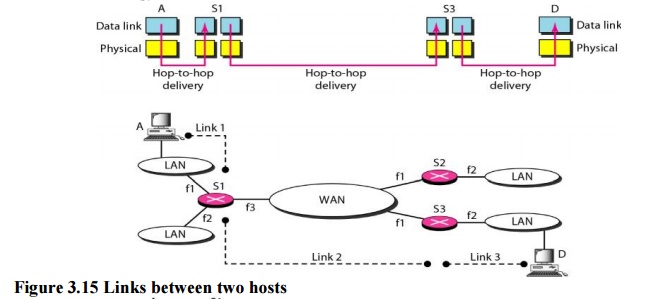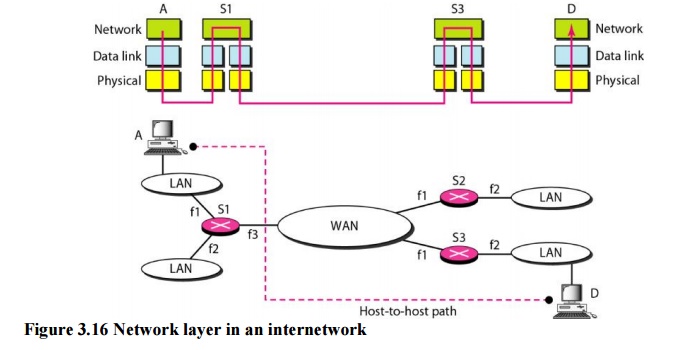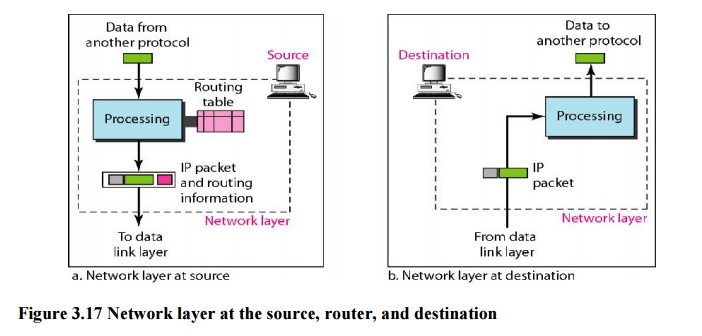Chapter: Computer Networks : Network Layer
Internet working and Need for Network Layer
Internet working:
The
physical and data link layers of a network operate locally. These two layers
are jointly responsible for data delivery on the network from one node to the
next. This internetwork is made of five networks: four LANs and one WAN. If
host A needs to send a data packet to host D, the packet needs to go first from
A to Rl (a switch or router), then from Rl to R3, and finally from R3 to host
D.
1. Need for Network Layer
To solve
the problem of delivery through several links, the network layer was designed.
The network layer is responsible for host-to-host delivery and for routing the
packets through the routers or switches


The
network layer at the source is responsible for creating a packet from the data
coming from another protocol (such as a transport layer protocol or a routing
protocol). The header of the packet contains, among other information, the
logical addresses of the source and destination. The network layer is
responsible for checking its routing table to find the routing information
(such as the outgoing interface of the packet or the physical address of the
next node). If the packet is too large, the packet is fragmented

The network
layer at the switch or router is responsible for routing the packet. When a
packet arrives, the router or switch consults its routing table and finds the
interface from which the packet must be sent. The packet, after some changes in
the header, with the routing information is passed to the data link layer
again.
The
network layer at the destination is responsible for address verification; it
makes sure that the destination address on the packet is the same as the
address of the host. If the packet is a fragment, the network layer waits until
all fragments have arrived, and then reassembles them and delivers the
reassembled packet to the transport layer.
Related Topics